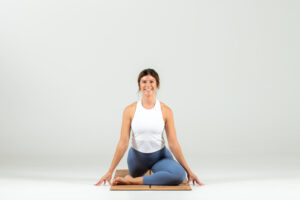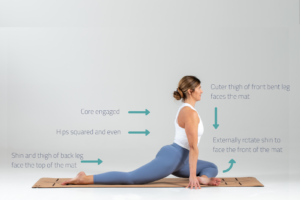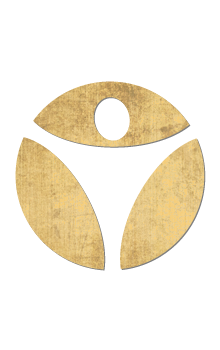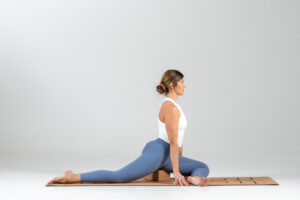Common Mistakes Beginners Make In Pigeon Pose
- Updated on: November 5, 2021
- Not engaging the core: Many beginners forget to engage the core (and keep it engaged) during Pigeon Pose. Allowing the core to relax during this pose can leave the back open for injury or pain. Keeping the core engaged provides the structural support for the muscles of the back as they extend through the full stretch of the pose.
- Putting too much weight on the back knee: Be careful to avoid putting too much weight on the back knee in this pose. You should never place direct pressure on the knee cap as it is a very small and unstable bone and can be injured easily. Press your back foot into the ground while engaging your core and lengthening your spine to support the pose without adding weight to the back knee.
- Letting the hips twist out of alignment: Some beginners can find it difficult to get the position of the hips right in Pigeon Pose. If your hips or legs are tight, you may find your hips twisting away from the bent knee and toward the back leg. This limits the stretch you are able to get from the pose, resulting in a missed opportunity for improving your mobility. The proper alignment is to have your hips square to the top of the mat, facing the short edge of the mat, with the weight evenly distributed between each hip. If your hips are too tight to maintain this position, please refer to the modifications below.
Do This…
Not that …
- Not externally rotating the front leg enough
Perhaps the most common mistake is not externally rotating the front leg enough. Beginners often bring the front leg forward and stop when the front of the shin faces down and touches the floor. To complete the stretch, externally rotate the front leg so that the outer side of the shin touches the floor instead. Note, beginners may not have the hip mobility to externally rotate the hips enough for the outer shin to touch the floor. See the modifications below to learn how you can use a block below the hips to help achieve the proper alignment.
Do This…
Not That …
- Taking the hips too far forward: It’s common to see people shifting the hips forward, lifting them off the ground, in Pigeon Pose. Instead, you should be shifting your hips back and down toward the ground. Most of the weight of this pose should be in the hips. If your hips are very tight and won’t sit all the way down on the ground, look below for how to modify the pose to make it safer and more comfortable for you and create more flexibility in your hips.
- Rotating back leg to the side: It’s also common to see the bag leg get rotated to the side, particularly if your hips are not squared to the front. Engage the hip and thigh of the back leg and actively extend backwards to avoid this mistake.
Want more tips for how to do pigeon pose?
Check out this pigeon pose tutorial and be sure to review our complete list of pigeon pose modifications for beginners.
Related Articles

The importance of maintaining correct alignment
Everything in your body is connected, so when one muscle isnt aligned properly it can be a slippery slope to injury. Building a solid foundation

Am I doing pigeon pose correctly? Frequently submitted student questions for pigeon pose!
Common questions: When is Pigeon Pose contraindicated? What do I do if I feel pain in my front knee in Pigeon Pose? What do I

Common mistakes beginners make in Pigeon Pose
Common mistakes beginners make: Not engaging the core: Many beginners forget to engage the core (and keep it engaged) during Pigeon Pose. Allowing the core


